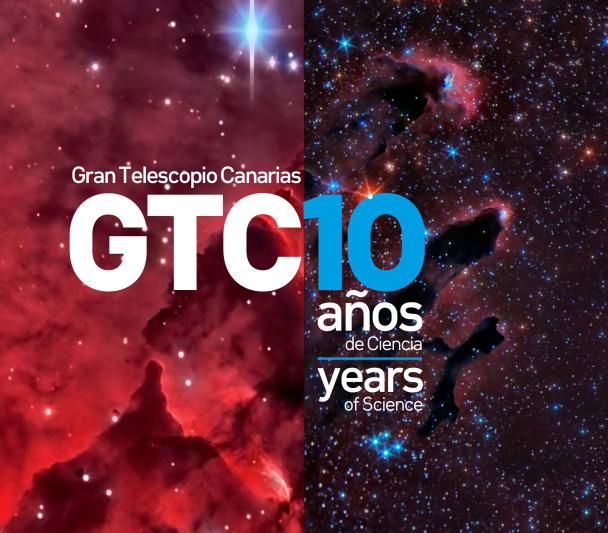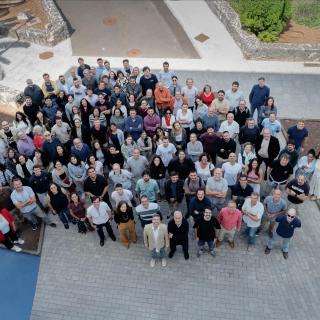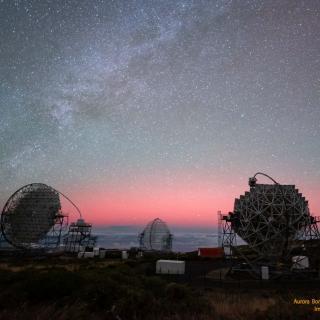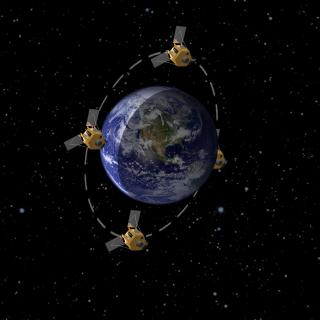The Centre for Astrobiology (CAB, CSIC-INTA), via the Spanish Virtual Observatory, is offering the scientific community and the general public a catalogue of more than 600,000 astronomical sources observed by the OSIRIS instrument on the Gran Telescopio Canarias.
The Gran Telescopio Canarias (GTC, or Grantecan) is the biggest and most advances optical-infrared telescope in the world. Situated in the Roque de los Muchachos Observatory (Garafía, La Palma), it started scientific operation in the spring of 2009. For the past ten years the data obtained have brought about spectacular advances in many fields of astronomical research, from extrasolar planets to the exploration of the very early universe.
The Centre for Astrobiology, via the Spanish Virtual Observatory project, is in charge of the scientific data archive of the GTC. In operation since November 2011, this archive contains the data from over 200,000 observations, of which over 75% have been made using the OSIRIS instrument.
OSIRIS (Optical System for Imaging and low-intermediate Resolution Integrated Spectroscopy) is a camera and a spectrograph for the visible wavelength range, which can be used to obtain images of objects hundreds of thousands of times fainter than those we can see with the naked eye.
Researchers at the Centre for Astrobiology have worked in collaboration with researchers at the University of Bordeaux (France) to process the images obtained with OSIRIS in the period 2009-2014 in order to generate a catalogue of six and a half million measurements, with high precision in brightness and position, of over 600,000 astronomical sources, ranging from objects in the Solar System to distant quasars. “Given the large quantity and high quality of the information available, we can be sure that this catalogue will become an important source of new discoveries in the universe” says Enrique Solano, the Principal Investigator of the Spanish Virtual Observatory at the Centre for Astrobiology.
The discovery of an ultra-cold binary (a type of stellar system of which only around a hundred are known), and the identification of 150 solar system objects not previously known, are just two illustrative examples of the enormous scientific potential of the catalogue.
Another very interesting aspect is that it is a catalogue with free access, so that not only professional astronomers but also researchers in other disciplines, amateur astronomers, teachers, and the general public will be able to access and use use the information contained in the catalogue.
The Director of the GTC, Romano Corradi, says that “It is valuable to point out that this catalogue is the produce of the exceptional sky quality above the Roque de los Muchachos Observatory, the excellent working properties of OSIRIS and of Grantecan, and the enormous range of possibilities that the Virtual Observatory offers for exploiting the science of astronomical archives”.
This work has been carried out at the Centre for Astrobiology (CSIC-INTA) in the framework of the Spanish Virtual Observatory, funded by the Ministry of Science, Innovation and Universities through the project AYA2017-84089-P, within the National Plan of Scientific and Technical Research and Innovation, 2013-2016, extended to 2017.
The Observatories of the Instituto de Astrofísica de Canarias (IAC) and the Gran Telescopio Canarias form a part of the network of Singular Scientific and Technical Infrastructures of Spain.
Article: Cortés-Contreras M., et al. "The Gran Telescopio Canarias OSIRIS Broad Band First Data Release", MNRAS Preprint 17 October 2019. https://arxiv.org/pdf/1910.07057.pdf
Links:
Access to the OSIRIS Catalogue
GTC scientific data archive at the Centro de Astrobiología
Contact:
Enrique Solano Márquez, Principal Investigator of the Spanish Virtual Observatory at the Centro de Astrobiología: esm [at] cab.inta-csic.es
Romano Corradi, director of the GTC: romano.corradi [at] gtc.iac.es

Asteroid observations (355891) 2008 WE46 made with OSIRIS Credit: Gran Telescopio Canarias/IAC




